Although Pigeon is a popular yoga pose, there are plenty of people who claim to hate it. As a powerful hip opening posture, Pigeon can be tough for beginners with limited flexibility. But when practiced regularly, this pose can change the way you sit, stand, and move around. To get all of the benefits, it’s important to fold into Pigeon consciously and mindfully. And it doesn’t need to be a struggle – by focusing on precise alignment, you’ll avoid creating strain and tension in the pose.
Also known as One-Legged-King Pigeon, or Eka Pada Rajakapotasana, Pigeon is a widely-used hip opener. Most Vinyasa and Hatha teachers incorporate a variation of the pose into the wind-down section of their classes. So even if you’re new to yoga, it’s likely you’ll have come across Pigeon before or will very soon.
Benefits of Pigeon
Physical Benefits
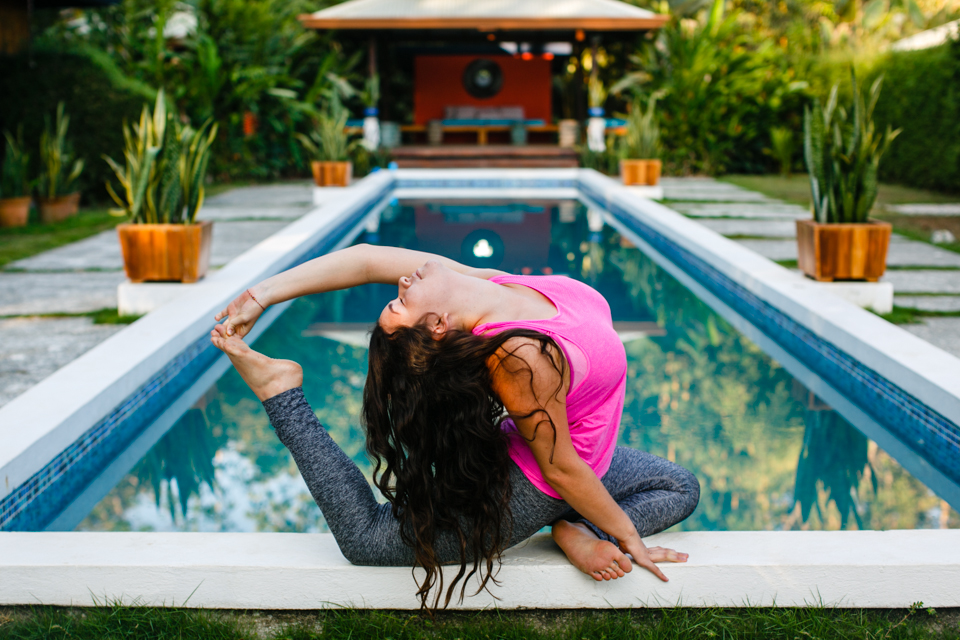
The forward-folding version of Pigeon Pose is a great hip-opener, while the more advanced variation of the pose incorporates a backbend. Physical benefits of Pigeon include outward external rotation of the hip and a deep stretch through piriformis muscle and IT band. By practicing Pigeon regularly, you can increase flexion in your knees and hips. But it can also help to ease lower back pain and strengthen your body for daily activities. Pigeon is also a great way to prepare your body for backbends and for seated postures, like Lotus Pose.
Internal Benefits
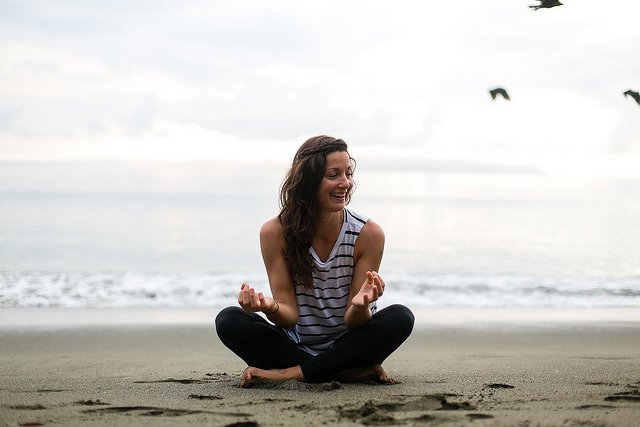
Practicing Pigeon isn’t just good for the physical body. The pose also offers important emotional benefits. When we bottle up negative emotions, we tend to store them in our lower back and hips. By focusing on these parts of the body, Pigeon helps to release emotional trauma, tension, and anxiety. It’s also a wonderful pose to practice when you want to balance your lower chakras. The root and sacral chakras are home to our needs for stability, trust, and intimacy. So by creating balance in these lower chakras, we can become more grounded and comfortable in our own skin.
How to Practice Pigeon
To practice one-legged pigeon pose safely, make sure that both of your hips are level and supported. If you’re finding it difficult to lower your hips while keeping them aligned, use a folded blanket or a small bolster to support them.
Step 1
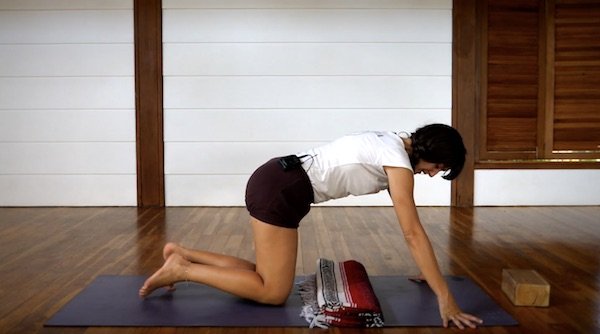
There are a few different ways to move into Pigeon Pose. In yoga class, your teacher might ask you to transition from Downward Dog or a lunge position. But as a beginner, starting from a tabletop position is ideal. So start on all fours, keeping your blanket nearby and your toes tucked under.
Step 2
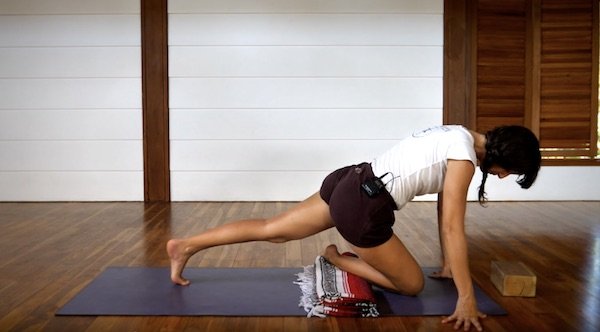
Bring your right knee forward to your right wrist. Your right heel should be comfortably aligned with your left hip. But make sure your right knee is a little further to the right than your right hip, forming a triangle shape. Next, slide your left foot back and untuck your toes. After moving into position, grab your blanket and place it under your right hip so that it feels supported.
Step 3
Unless you’re very flexible, your right shin will be on a diagonal line to the front of your mat. Some advanced practitioners are able to keep their leg parallel to the front of the mat, but it’s not necessary. Whatever level you’re at, make sure to flex your right foot to protect your knee joint.
Step 4
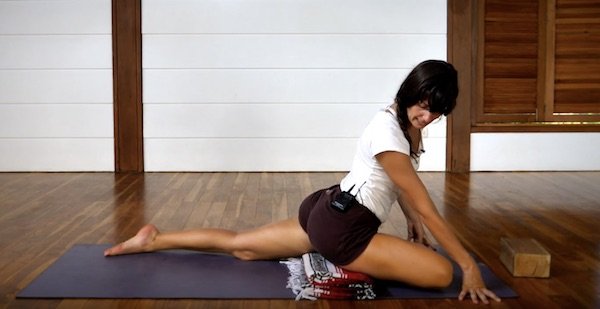
Look back over your left shoulder to check that your left leg is correctly aligned. The left leg should be in line with its own hip socket. You should be lying on top of the left knee and thigh and the top of your left foot should be lying on the mat.
Step 5
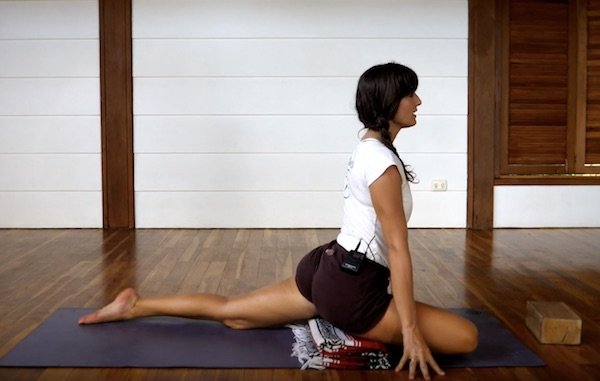
Let your hips sink down but keep your inner thighs engaged. Inhale deeply, lengthen your spine, and activate your pelvic floor to shift your pelvis into a more upright position. This will take the pressure off your lower back. Square your torso towards the front of your mat, keeping your hips level.
Step 6
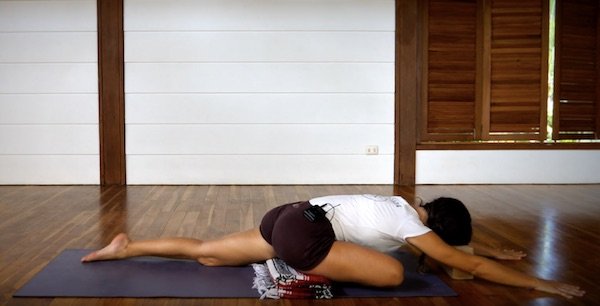
As you exhale, walk your hands forward until your forearms are resting on the floor. If you have a blanket under your hips, you might also want to add a block in front of you so that you have an elevated place to rest your forehead. Once your head is supported, stretch your arms out in front you. You could also try placing your forearms on top of one another and resting your forehead on them.
Step 7
When you’re ready to come out of Pigeon, push your upper body up with your hands and walk your hands back. Slowly shift your right foot back and repeat the pose on the other side of your body.
Modifications for Pigeon Pose
Once you’re comfortable with the leg positioning of Pigeon, you can move onto the backbend variation of the pose. To set up this variation, get into Pigeon by following the steps above. But instead of folding forward, keep your torso upright. Gently squeeze your left hamstring and glutes and draw your heel towards you. Grab your foot with the left hand and breathe into the stretch. Make sure your core muscles are activated and your chest is squared towards the front of the mat. You can also deepen the pose by reaching up with your right hand and holding your foot with both hands, elbows pointing towards the ceiling.
If you find it difficult to catch your foot with your hand, work towards it by using a strap. Start by looping a strap around your back foot (your left foot, in this case). Then, tighten the loop around the top of your foot. Lie the strap alongside your left leg as you move into the first position of Pigeon. Next, bend your left knee and grab the strap with your left hand, lifting your arm up and over your head. You can also grab the strap with your right hand to deepen the stretch for your lower back, abdomen, and chest. Walk your hands down the strap towards your foot. Keep your chest broad and your neck lengthened. Don’t worry about touching your head with your foot, just focus on keeping your backbend smooth.
If the backbend is too much for you, stick to the forward folding version of Pigeon. It’s a wonderfully beneficial pose for your body and you can try the backbend again once you’ve developed your flexibility and core strength.
Pin It For Later!
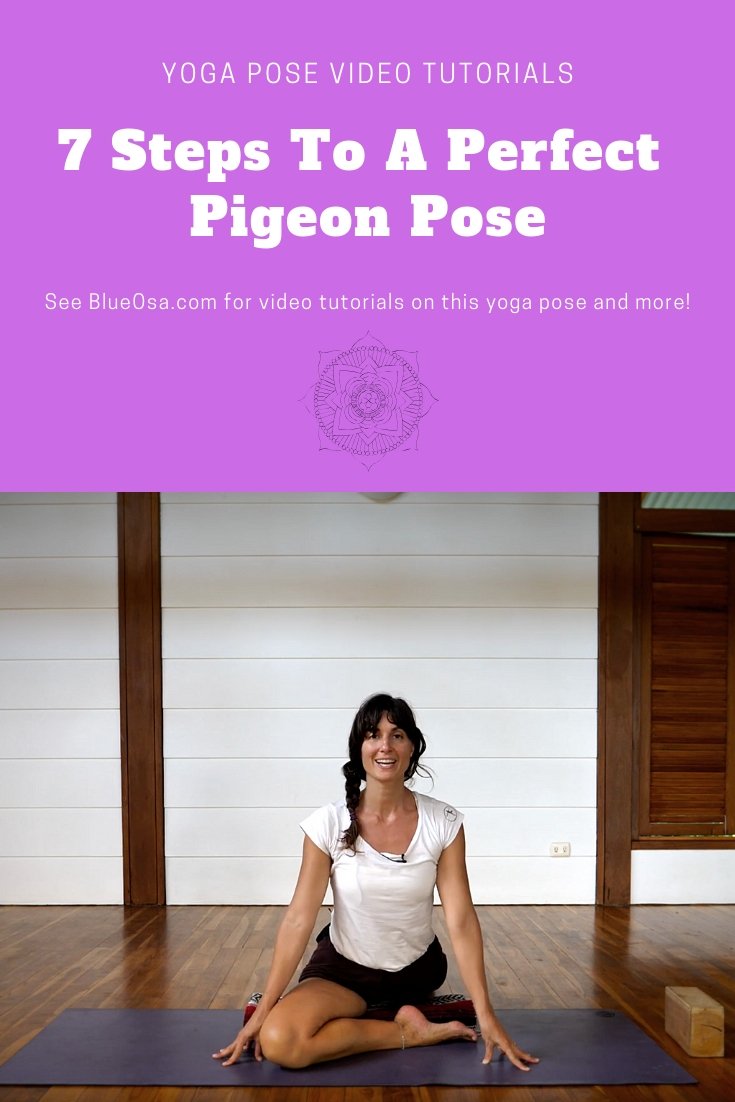
About the author:
Yogi Aaron, author of “Autobiography of a Naked Yogi” is the co-owner of Blue Osa Yoga Retreat and Spa, where he brings passion and adventure to countless students through his teachings and lectures. Inspired by his own practice, he guides students to secret and far-flung locales, empowers them to realize their own limitless potential, and makes yoga relevant and accessible for the modern world. Since 2002 he has been traveling and leading retreats worldwide. He currently serves as the yoga director leading the Yoga Teacher Trainings at Blue Osa.







